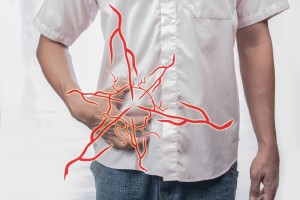Posted on September 04, 2015 by Jenny Cromack
What Is A Hernia?
A hernia occurs when a portion of an organ (usually the intestine) protrudes through a defect in a muscle or soft tissue. This defect is usually a small tear or rupture allowing the organ tissue to be pushed through. A hernia can occur in several areas of the groin and abdomen regions. Common areas for hernia are abdominal, inguinal, and femoral.
Signs and Symptoms:
- Pain and tenderness in the area of herniation
- A physical lump is often present
- Lump may disappear on lying down, but return when standing and when coughing or sneezing.
- May feel an ache but is rarely tender to touch
- If a hernia becomes strangulated it will be severely and constantly painful and may cause nausea and vomiting
Causes:
Hernias do have some genetic determination but is also linked to age and tissue deterioration. They are usually the result of a structural weakness in the tissue lining which can be effect by the previous factors but also by persistent coughing or sneezing or damage from previous surgeries. Extra stress through the abdominal and groin tissues can also lead to rupture and a subsequent hernia.
It is therefore very important to ensure that if were are placing extra stress on the body, via weightlifting and exercise, that we take precautionary measures to do this safely and effectively.
Hernia Prevention:
Exercise and weightlifting will actually help strengthen soft tissues if done so in a safe manner, hernias are more likely to occur if someone is detrained or sedentary and jump straight into strenuous activity. Here are a few helpful tips to reducing your risk of hernia when exercising and weightlifting.
- Effective Warm Up
A quick 5 or 10 minutes on a cardio machine will tick one box of the warm up procedure but it won’t help reduce your risk of hernias. Your warm up should also include specific exercises to activate and ‘wake up’ your abdominal and core muscles. Good examples of exercises to include are planks, gluteal bridges, or supermen and can just be done for 1-2 sets of 15-20 reps to activate the core prior to lifting heavy.
- Progressive Weight Increases
Use 1 or 2 sets on a light load to warm up and focus on switching your trunk and core on throughout these lifts. When increasing your weights do this is small increments even if you feel you can make bigger jumps. It is much better to make smaller steps than place excessively big steps and overstress the tissues.
- Don’t Force Reps
People will often push themselves to failure and beyond. They will hit a breaking point seek help from a spotter but still push on through more forced, and often, poor repetitions. To avoid any excessive forcing of reps but maintain the volume of your workout simply re-rack the weight and allow 10-20 seconds then finish your set. This will keep the total volume of your workout but not overload you to the point of tissue failure in a single set.
- Do Not Hold Your Breath
It is very common for people to hold their breath when they lift. The problem with this is that often the body will still try and exhale but the airways are closed which causes an increase in abdominal pressure as well as arterial blood pressure. This phenomenon is known as the Valsalva Manoeuver and the increase in pressure can contribute to the occurrence of a hernia.
- Abdominal Breathing
People that do breathe when lifting may only breathe using their chest cavity known as thoracic breathing. This is often much shallower breathing and not always the most beneficial for hernia prevention or general trunk stability. In order to reduce your risk of a hernia try more abdominal breathing. When lifting your weights take a deep breath into the abdomen (so your belly inflates) on the easiest part of your lift (i.e., downward movement of the squat), then as you initiate the hard part of the movement (upward movement of the squat) exhale the air and contract your abdominals. This helps by strengthening the abdominal wall, providing stability to the trunk and spine during lifts, and can also make the lifts feel easier and stronger (due to trunk stability).
- Maintain Healthy Body Weight
Being overweight and carrying unnecessary weight stresses the body and if an individual doesn’t have the relative strength to cope with this it may contribute to the occurrence of a hernia. Therefore, regular exercise to maintain a healthy weight in conjunction with healthy balanced nutrition.
- Minimise the use of Lifting Belts
Weightlifting belts are a common sight in some gyms and training environments. Despite having some benefits when used for the right purpose at the right times they can also have detrimental effects on the body. People assume that lifting belts reduce the stress of the lower back but despite there being an increase in abdominal pressure it doesn’t reduce the loads on the spine. The belt also gives people a false sense of security and they will not activate their trunk muscles, but insist on lifting heavier than normal which can then increase the likelihood of a hernia.
Summary
Weightlifting and exercise is not the ‘bad guy’ when it comes to hernias but its common occurrence is usually down to people simply pushing themselves a little too far in short spaces of time, overloading the tissues without sufficient strengthening, and inefficient breathing or bracing techniques. Therefore simply following some easy breathing techniques, ensuring that our trunk (abdominal and spinal muscles) are active throughout our lifts will help reduce the risk of hernia.


